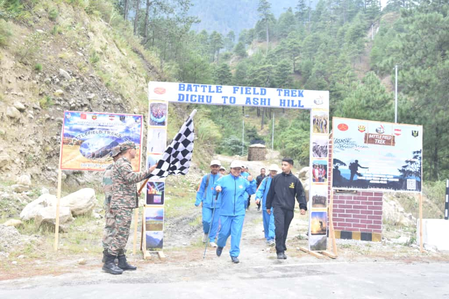
At the time, Calcutta was a bustling trading hub, and Khejuri, an essential export-import center for foreign merchants, was teeming with its routine port activities. Khejuri had a history of being susceptible to cyclones, having faced natural disasters in 1780, 1823, 1831, and 1833, but the one in 1864 was particularly devastating.
The cyclone brought a massive sea-wave that surged higher than normal, submerging the entire port area and causing widespread destruction. To illustrate the calamity’s scale, out of the 32 witnesses scheduled to appear in a robbery case, only two survived.
The nearby village of Kaukhali, located about eight kilometers south of Khejuri, also experienced severe flooding, with water levels rising to the height of a 13-foot lighthouse.
In a recollection of the day documented in the Bengal Administration Report of 1864-65, the superintendent of the Kakhauli lighthouse described the events. The cyclone’s destructive force manifested around 10:30 am, with the wind veering from the northeast to the east. It grew progressively stronger, sweeping away everything in its path. The gale continued until 3 pm, followed by a destructive storm blowing from the southwest, causing sea-swelling that resulted in the loss of human lives and livestock. By 5 pm, the storm began to weaken, and the sky cleared, but there was waist-deep water outside the lighthouse.
Remarkably, the cyclone did not inflict significant damage to crops, even though the harvest season had already passed. When a farmer was asked about the unharvested crops, he responded, “Who is to eat it?” The heavy loss of loved ones left a profound impact on the survivors, sapping their vitality and leaving them in despair.
This catastrophic event was documented in a collection of papers titled ‘A Brief History of the Cyclone at Calcutta and Vicinity 5th October 1864,’ published in 1865 by the Military Orphan Press. These papers contain accounts of the devastation and its aftermath, including the drowning of villages and the need to leave them untouched until the dry season when they could be set ablaze to mitigate the stench and disease.
The cyclone’s impact was extensive, leading to the destruction of Khejuri and Hijli ports, damaging or destroying most ships in the harbor, and leveling over 100 brick homes and tens of thousands of tiled and straw huts. In the following months, the city, its surroundings, and the harbor underwent significant reconstruction efforts.
This calamitous cyclone of 1864 remains a significant historical event that left an indelible mark on the history of Calcutta.




